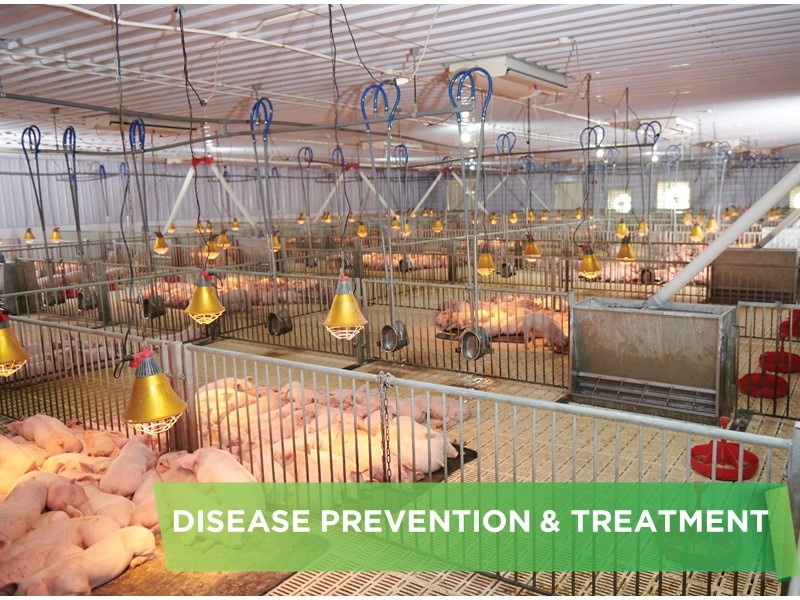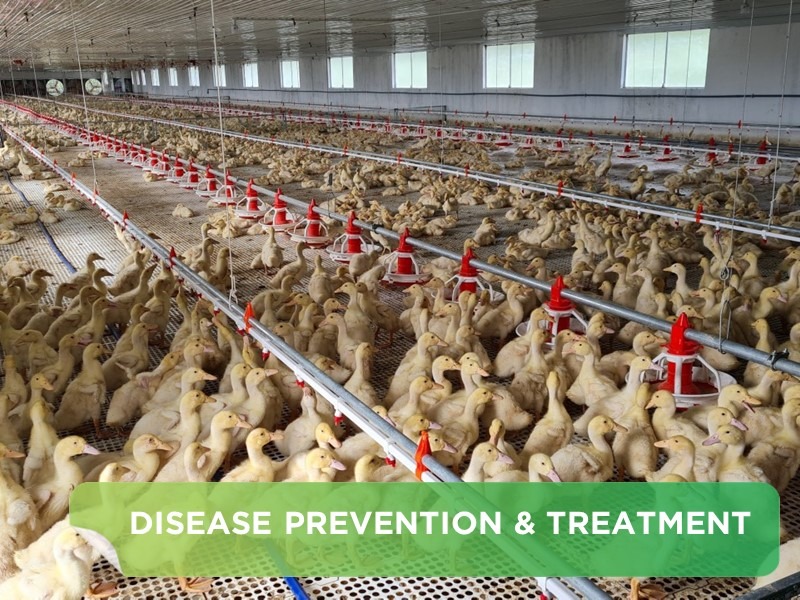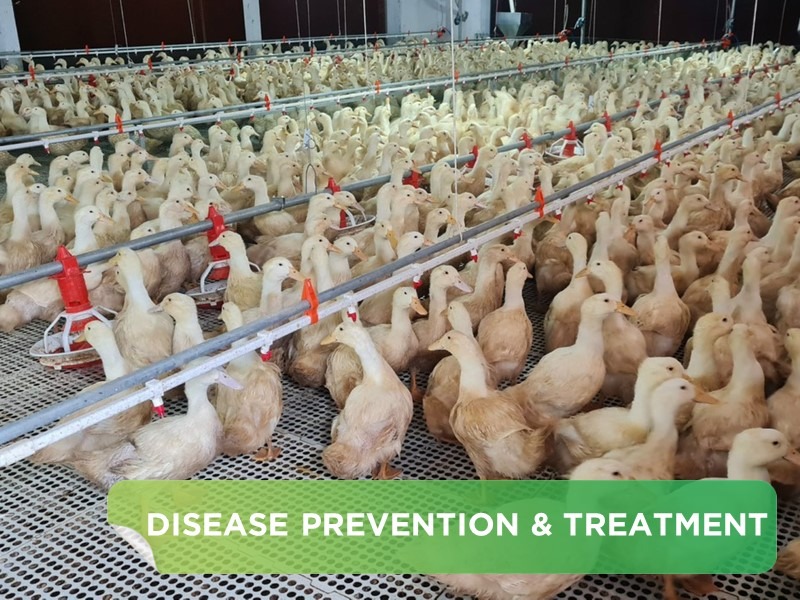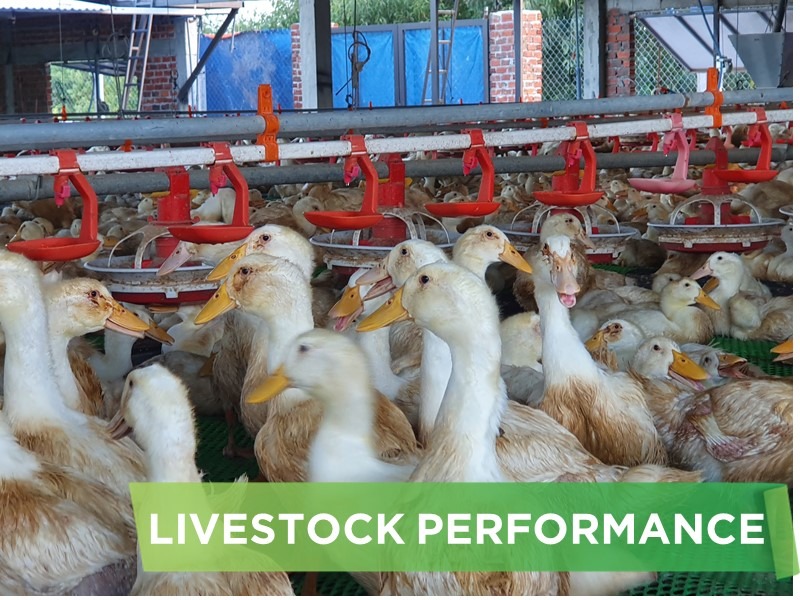ORT disease is also known by other names such as rhinitis, tracheitis, pneumonia, air sac, and suppurative pneumonia. This is a fairly common disease in poultry, especially in chickens. Every year, this disease has caused a lot of damage to chicken farmers. This article by GREENFEED will show customers and partners how to recognize the signs of ORT disease and how to handle it when detecting chickens infected with ORT in time, thereby limiting economic damage.
1. What is ORT disease?
ORT disease is an acute respiratory disease caused by bacteria called Ornithobacterium rhinotracheale. The bacteria directly affect the respiratory tract and lungs with typical symptoms such as difficulty breathing, wheezing, yawning, coughing, runny nose, purulent pneumonia and bean curd. ORT causes acute disease in chickens and is isolated from many species such as quail, waterfowl... When treated with common antibiotics such as: Tylosin, Cephacilin, Enrocin... the disease is reduced but not significantly.
The disease often occurs in spring, winter and the changing seasons, when the humidity is high, the weather is humid, the disease is combined with lung fungus, which increases the mortality rate significantly. The disease occurs in all ages, but laying hens and older chickens are often infected at a higher rate. In young poultry, ORT can cause sudden death due to brain and skull infection (rarely in chickens over 12 weeks old), the incubation period is from 2-5 days.
If ORT is not controlled promptly, it can cause a lot of economic damage to farm owners such as:
Laying hens: reduced laying rate, small eggs, bad egg shells
Broiler chickens: reduced weight gain, slow growth
The disease spreads quickly, high mortality rate if not detected early and intervened promptly.
The severity of the disease depends on the following factors:
• The ability of secondary bacterial and viral strains to cause disease
• Issues regarding care and feeding conditions as well as whether or not treatment and medication are used correctly and promptly.
• The mortality rate is higher when the disease is combined with Newcastle virus or opportunistic bacteria.
2. Identifying ORT in chickens
Regular monitoring and recording of early symptoms in chickens helps farmers minimize economic losses. The following are common symptoms of ORT in chickens:
1. Chickens have difficulty breathing, stretch their necks to breathe, yawn, cough, shake their heads, flap their beaks, and wheeze.

2. Watery eyes, swollen head, chicken cough, sneezing, swollen eyes

3. The chicken has a very high fever, is lethargic, and eats less.

LESIONS
1. Caseous or fibrinous inflammation of the liver and heart with straw-colored

2. Purulent pneumonia

3. Trachea contains Casein

4. Tracheal hemorrhage, trachea with a lot of phlegm

5. Eye inflammation

6. Mù mắt

7. Liver swelling and hemorrhage
8. If combined with other diseases, there may be some other lesions
3. Distinguishing ORT from E. COLI
| ORT | E.COLI | |
| Symptom |
Chickens yawn continuously and often have difficulty breathing, trachea has a lot of phlegm |
E. Coli causes asthma but trachea has no phlegm |
| Pathology |
- ORT causes inflammation and blindness - Fibrin on the liver and heart is straw yellow |
- E.Coli does not cause inflammation and blindness - Fibrin on the liver and heart is usually opaque white like longan pulp - Often causes diarrhea with green and white stools |
4. How to prevent and treat ORT?
- Disease prevention:
Some notes to prevent ORT for poultry at home:
• Do not raise chickens of many ages in the same barn
• Clean the environment before, during, and after raising
• Vaccinate chickens with all types of vaccines
• Always keep chickens at a sufficient temperature during the changing seasons or winter, ensuring ventilation in the barn
• Use antibiotics regularly (Amoxycillin, Doxycillin)
- Disease treatment:
Normally, ORT in poultry is often combined with other diseases. It can be the main cause or it can be a secondary disease after other diseases (mainly secondary). Therefore, the principle in treating ORT is to prioritize the disease that causes the most deaths and treat it first.
The specific treatment for ORT in chickens is as follows:
First, clean the barn and then spray disinfectant inside and outside the farm. Spray the mixture (250g Nacl + 250ml peppermint expectorant + 100g Linco-Spect with 20 liters of water) directly on the chickens once a day, spray for 3-4 days
At the same time, combine the following steps:
Step 1: Before treatment, reduce the chicken's fever, then use antibiotics to kill the pathogen → when detecting the disease, we first need to give the chicken the following drugs at the same time:
• Fever reducer: can use paracetamol.
• Expectorant: can use Bromhexin.
Step 2: Destroy and inhibit the pathogen with antibiotics sensitive to ORT disease in chickens:
• Ceftiofur (new generation broad-spectrum antibiotic): injection.
• Linco – Spect: injection
• Azithromycine: injection or oral
Note: After treatment, the mortality rate stops immediately, but after 3 days, the beak scabbing and wheezing still persist for a few more days.
Thus, when seeing the chicken flock with respiratory symptoms such as difficulty breathing, coughing, wheezing, neck stretching, blind eyes or eye inflammation, and autopsy shows pneumonia with pus and bean curd in the lungs and 2 main bronchi, it is almost certain that it is ORT in chickens. It is necessary to quickly carry out ORT treatment steps for the entire flock. GREENFEED Vietnam hopes that the above information can help customers in detecting, controlling and treating ORT effectively.












